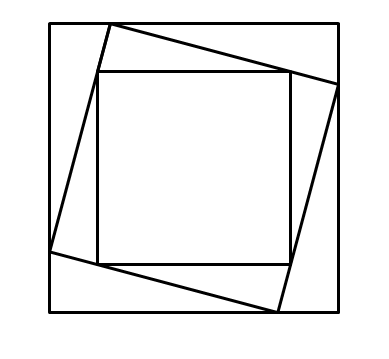Area of Square Inside Two Concentric Squares

Let two squares of side lengths \(a\) and \(b\) with \(b<a\) be positioned so that their centers coincide and that corresponding sides are parallel, as shown. Draw a square \(\mathcal{S}\) so that it is inscribed inside the square of side length \(a\) but circumscribes the square of side length \(b\).
What restrictions must be placed on and so that such a square exists?
Show that under the conditions laid out in the previous part, square has side length equal to .
NOTE: This discovery was first found by a friend of mine in response to a problem I had created.
No vote yet
1 vote
Easy Math Editor
This discussion board is a place to discuss our Daily Challenges and the math and science related to those challenges. Explanations are more than just a solution — they should explain the steps and thinking strategies that you used to obtain the solution. Comments should further the discussion of math and science.
When posting on Brilliant:
*italics*or_italics_**bold**or__bold__paragraph 1
paragraph 2
[example link](https://brilliant.org)> This is a quote# I indented these lines # 4 spaces, and now they show # up as a code block. print "hello world"\(...\)or\[...\]to ensure proper formatting.2 \times 32^{34}a_{i-1}\frac{2}{3}\sqrt{2}\sum_{i=1}^3\sin \theta\boxed{123}Comments
2b>a
Let θ be the smaller angle that the diagonal makes with one of the sides. Let d be the side of the middle square. Then a=d(sinθ+cosθ) and d=b(sinθ+cosθ). So a=b(sinθ+cosθ)2. It's easy to see that 1≤sinθ+cosθ≤2, so the condition boils down to a≤2b.
The area of the square is d2=b2(sinθ+cosθ)2=ab, so the side is ab.